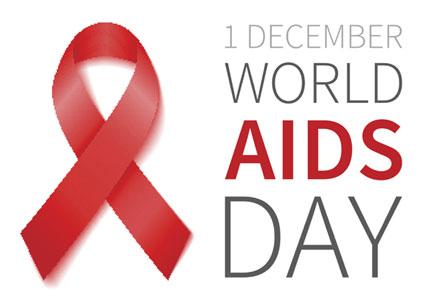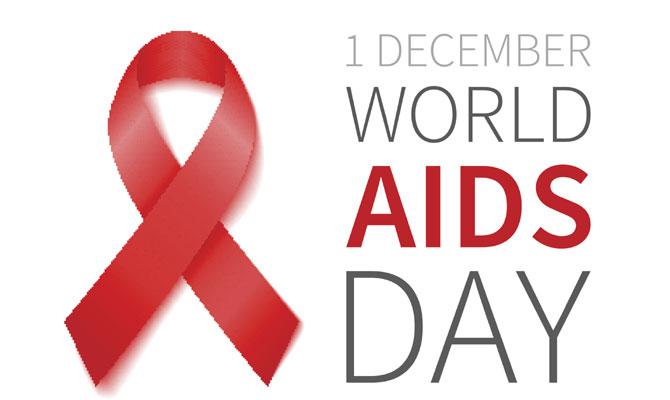On the occasion of World AIDS Day, we take a look at several myths related to the virus and the disease...

World AIDS Day, HIV/AIDS, December 1
It's a commonly believed myth that kissing and hugging can spread HIV virus. Recent studies have proven that this is not the case. On the occasion of World AIDS Day, we take a look at several other myths related to the virus and the disease that need to be busted, how this global health observance came to be, facts and figures of HIV/AIDS, ways in which the illness can be passed on, symptoms, treatment methods and more...

ADVERTISEMENT
HIV and AIDS are not the same thing
A person living with HIV has the Human immunodeficiency (HIV) virus in their body. AIDS occurs when the immune system is so weak it can no longer fight off a range of diseases with which it would normally cope.
A few HIV/AIDS myths busted
>> There is no risk of HIV infection from spitting and the risk of infection from biting is negligible. There have been four possible reports of HIV being transmitted through these means but they occurred in extremely specific and unusual circumstances.
>> The possibilities of being infected with the HIV virus from picking up or standing on a used needle are slim to none. HIV is a very fragile virus that does not survive for long when exposed to the environment. Only five such cases have been reported but they all occurred in healthcare settings and there have been none since 1999.
>> HIV will not be transmitted through day-to-day contact, touching, kissing or sharing utensils with an afflicted person. It can only be acquired through sexual intercourse.
>> The myth that a person can be infected with the HIV virus despite condom use is quite prevelant. This is untrue since the most common way to be infected with HIV is through unprotected sex without a condom. When used properly and appropriately, condoms are extremely effective at protecting against HIV transmission.
>> HIV cannot be passed on through sharing razors or toothbrushes with an affected person.
>> You can't be affected with HIV from a mosquito or flea bite. This is because the virus can't survive in or on an insect and they can only suck blood up and not inject it back in.
>> HIV cannot be passed on through genital fingering, genital-stimulation by hand or mutual masturbation.
>> The HIV virus cannot be transmitted through saliva, sweat or urine.
The four stages of HIV infection
Stage 1: Sometimes referred to as 'seroconversion', symptoms include a severe flu-like illness along with a rash, which may disappear after a few weeks and can't be detected immediately during medical check-up.
Stage 2: Known as the, 'asymptomatic' stage, the afflicted person or persons show no signs of having a HIV infection, which could even extend up to ten years.
Stage 3: This is the symptomatic stage, where the body's immune system has become so damaged that it becomes susceptible to a range of 'opportunistic' infections such as tuberculosis, pneumonia and blood poisoning, fungal diseases such as oral thrush, and viral diseases.
Stage 4: The fourth and final stage, when the immune system has been so weakened that it can no longer fight off a range of increasingly severe illnesses, eventually leading to an AIDS diagnosis.
The HIV infection can be halted or slowed down using highly effective HIV medication following the first stage, which may be able to prevent the immune system from being damaged severely. This could stop stages three and four from taking place.
How HIV is passed on
The HIV virus can mainly be transmitted due to unprotected sexual intercourse i.e. sex without a condom and infected bodily fluids such as semen, vaginal fluids, blood, breast milk and rectal secretions. A person can also be infected when sharing infected needles, syringes or other injecting drug equipment. Although oral sex isn't entirely risky, it is best to avoid giving oral sex if you have cuts or sores in your mouth or bleeding gums, as this increases the risk of HIV entering your body. HIV can be transmitted through both anal and vaginal sex, but in some circumstances there is greater risk involved in anal sex because anal intercourse carries a greater risk of trauma (such as tearing of the skin and bleeding) which makes it easier for the infection to get through.
Some preventive measures and treatment
Practice safe sex: The best way to prevent getting infected with HIV would be to use a condom during vaginal or anal sex. Using a dental dam during oral sex is advisable.
HIV/AIDS Test: Getting tested at a local sexual health clinic, GP, private doctor's surgery, hospital or a local community setting is a good preventive measure. The tests are generally free of charge and the results take anywhere from 20 minutes to two weeks, depending on the type of test you have. Usually a blood sample is taken either through a needle or finger prick, but you can also now test for HIV through saliva.
The HIV/AIDS test results are extremely accurate and 'false positives' are very rare (although slightly more common in rapid tests — where results are almost immediate). But all HIV positive test samples are sent for a second, lab-based test for confirmation — so a person would never incorrectly be diagnosed with HIV.
A few facts and figures about HIV/AIDS
84%: The number of people, who are aware that kissing will not spread HIV.
2%: The number of people living with HIV, who contracted it through the injection of intravenous drugs.
99.5%: The number of children born from HIV+ women, who don't have HIV.
85%: The number of people diagnosed with HIV in the UK who are not infectious.
36 million: The number of people, who died of AIDS by 2013 since the disease's discovery in 1981.
35.3 million: The estimated number of people, who are living with HIV, making it one of the most important global public health issues in recorded history.
2 million: The number of lives lost each year to the AIDS pandemic.
270,000: The number of children, who die of AIDS each year.
About World AIDS Day
World AIDS Day, observed globally on December 1 each year since 1988, is one of the eight official global public health campaigns marked by the World Health Organization (WHO). Government and health officials, non-governmental organizations and individuals around the world observe the day and are dedicated to raising awareness of the AIDS pandemic caused by the spread of HIV infection, and mourning those who have died of the disease.
It was first conceived by former American journalist James W. Bunn and Thomas Netter, two public information officers for the Global Programme on AIDS at the World Health Organization in Geneva, Switzerland, who got their idea approved by Dr. Jonathan Mann, Director of the Global Programme on AIDS (now known as UNAIDS).
The Joint United Nations Programme on HIV/AIDS (UNAIDS) became operational in 1996, and it took over the planning and promotion of World AIDS Day. UNAIDS created the World AIDS Campaign in 1997 to focus on year-round communications, prevention and education and in 2004, the World AIDS Campaign became an independent organization.
 Subscribe today by clicking the link and stay updated with the latest news!" Click here!
Subscribe today by clicking the link and stay updated with the latest news!" Click here!







